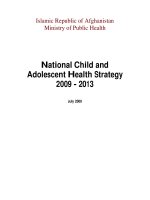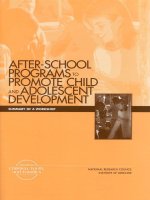child and adolescent counseling chapter 11
Bạn đang xem bản rút gọn của tài liệu. Xem và tải ngay bản đầy đủ của tài liệu tại đây (223.35 KB, 38 trang )
Chapter 11
Individual Psychology
One of the most beautiful gifts in the world is the
gift of encouragement. W hen someone encourages
you, that person helps you over a threshold you
might otherwise never have crossed on your own.
John O’Donohue
© 2011 Brooks/Cole, A
Chapter Objectives
After reading this chapter, you should be able to:
•Outline the development of individual psychology and Adler
•Explain the theory of individual psychology
•Discuss the counseling relationship and goals in Adlerian
counseling
•Describe assessment, process, and techniques
•Demonstrate some therapeutic techniques
•Clarify the effectiveness of Adlerian counseling
•Discuss Adlerian play therapy
© 2011 Brooks/Cole, A
Alfred Adler
• Born in 1870 in Vienna, Austria
• Received medical degree
• Was a member of Freud’s discussion
group
• Emphasized human nature as being
fundamentally social
• Moved to U.S. in 1935; died in 1937
© 2011 Brooks/Cole, A
Individual Psychology
• German word Individualpsychologie
meaning “psychology of the whole that
cannot be divided”
• Basically a psychology that is
concerned both with individuals as
they are in themselves and in their
relationships with others
© 2011 Brooks/Cole, A
Nature of People
• People develop a sense of inferiority
because they are born completely helpless
and remain that way for childhood
• Human behavior falls on a continuum
between concepts of masculinity,
representing strength and power and
femininity, symbolizing weakness and
inferiority
© 2011 Brooks/Cole, A
Nature of People
• Need for Success: People seek power and prestige and
strive for goals related to social approval.
• Goals of Behavior: All behavior is goal directed.
• Lifestyle: Pattern of behavior that will predominate
throughout a person’s life.
• Social Interest: A person’s amount of social interest is a
good barometer of mental health.
• Family Environment: Three environmental factors affect the
development of a child’s personality: family constellation,
family atmosphere, and the prevalent methods of training.
© 2011 Brooks/Cole, A
The Family Constellation
• One goal of counseling is to construct a
picture of the family dynamics and the child’s
place in the family constellation
• Ordinal position in the family is a key to the
lifestyle pattern being developed by the child
and may have a significant effect on how that
child perceives reality
© 2011 Brooks/Cole, A
Family Atmosphere
• Adlerians stress the importance of the
family atmosphere in the development of
the child
• Family constellation is the description of
how family members interact
• Family atmosphere is the style of coping
with life that the family has modeled
© 2011 Brooks/Cole, A
Family Atmosphere Profiles
© 2011 Brooks/Cole, A
Theory of Counseling
Adler’s four ties create reality and meaning in people’s
lives:
1. People are on earth to ensure the continuance of
the human species.
2. Our survival depends on our need to cooperate with
our fellow human beings.
3. Human beings each live in two sexes--the
masculine, powerful side of our nature and the
feminine, weaker side of our nature.
4. Human problems can be grouped into three
categories: social, occupational, and sexual.
© 2011 Brooks/Cole, A
The Well-Adjusted Child Exhibits
the Following Qualities:
© 2011 Brooks/Cole, A
Theory of Counseling
• Two fundamental styles of life: direct and
indirect approaches through strength and
power or through weakness
• Focus of counseling is harnessing the drive
to compensate for weakness so that
positive, constructive behavior results
• Adler believed that people are pulled by
their goals and priorities
© 2011 Brooks/Cole, A
Counseling Method
• No distinction between conscious and
unconscious material
• Frequently analyze inferiority feelings
• Questions similar to lifestyle interviews
• Examine the academic, extracurricular and social
adjustments
• Primary goal is to point out to the client the
overcompensation and defensive patterns being
used to solve problems and to find more
successful ways
© 2011 Brooks/Cole, A
Counseling Method
• Counselor’s job is to re-educate children who
have developed mistaken ideas about some
concepts of their lives
• Counselor and child are equal partners in the
process
• Child is a responsible person and can learn better
ways to meet personal needs
• Positive view of human nature indicated through
the counselor’s faith, hope, and caring attitude
toward the child
© 2011 Brooks/Cole, A
Counseling Process
Phase I. Examine formative years of the person.
Phase II. Collect early recollections from the
child’s past.
Phase III. Illustrate what they are doing and the
principles under which they operate.
Phase IV. Reorientation toward living through
encouragement process.
© 2011 Brooks/Cole, A
Early Recollections
• Earliest impressions of life and how the
child feels about them
• Ask child to remember as far back as
possible, recollect specific incidents,
with as many details as possible,
including reaction at the time
• Three to six of those help show pattern
in lifestyle
© 2011 Brooks/Cole, A
Goals of Misbehavior
• As children grow and interact, they
gradually develop methods for
achieving their goal of belonging.
• Several factors such as family
constellation, family atmosphere and
the child’s reactions to these are
critical in the development of coherent
patterns of behaviors and attitudes
© 2011 Brooks/Cole, A
Goals of Misbehavior
• Dreikurs and Soltz analyze immediate goals
of children
• Children with no pattern of misbehavior have
the goal of cooperation and collaboration
• They find their place and feel good about
themselves
• Socially and personally effective
• By contrast, discouraged child pursuing
mistaken goals
© 2011 Brooks/Cole, A
Goals of Misbehavior
1.
2.
3.
4.
Attention Getting
Power Struggle
Revenge Seeking
Display of Inadequacy
• Adults can teach themselves and children
about these mistaken goals and help
children find other ways to meet their goal
of belonging
© 2011 Brooks/Cole, A
Interventions for Four Goals
• Four goals intended to help adults understand
that how they feel about what the child is
doing most clearly explains the child’s
mistaken goals (attention, power, revenge,
and withdrawal)
• Steps outlined for determining goal, learning
corrective response and child’s reaction to the
correction follow
© 2011 Brooks/Cole, A
“Four-goal Technique”
1. Observe the child’s behavior in detail.
2. Be psychologically sensitive to one’s own
reaction to the behavior.
3. Confront the child with the goal of the
behavior.
4. Note the recognition reflex.
5. Apply appropriate corrective procedures.
© 2011 Brooks/Cole, A
Purpose of Your Misbehavior
When you get into trouble for what you do, is it because you….
___want people to notice you?
___want people to do more for you?
___want to be special?
___want some affection?
___want to be the boss?
___want to be in charge?
___want people to do what you want?
___want people to stop telling you what to do?
___want power?
___want to get even?
___feel like you have treated unfairly?
___want people to see what it feels like to hurt?
___want people to know you don’t like what they have done?
___want to be left alone because you can’t do it anyway?
___want to be left alone because you might fail?
___want people to stop asking you to do things?
© 2011 Brooks/Cole, A
Purpose of Misbehavior
Attention Getting
• Client: “Life is only good when I’m the center of the attention.”
• Counselor: “Does being disruptive make you noticeable?”
Power Struggle
• Client: “Life is only good when I get my way.”
• Counselor: “Could it be that you want to have it your way? Be the
boss?
Revenge
• Client: “The best way to handle my feelings is to hurt you.”
• Counselor: “Could it be that you want to hurt them because they
hurt you?”
Display of Inadequacy
• Client: “Best way to get out of work is to mess up everything.”
• Counselor: “You feel helpless and do not know what to do?”
© 2011 Brooks/Cole, A
ATTENTION GETTING
Corrections of Misbehavior and
Attention Getting
---------------------------------------------------------------------ADULT’S REACTION
• Feels annoyed
---------------------------------------------------------------------THE PROBLEM GOAL AND FAULTY LOGIC
• Wants to be noticed
---------------------------------------------------------------------ADULT”S CORRECTIVE PROCEDURES
• Gives attention when child is not making a bid for it.
• Ignores misbehaving child
---------------------------------------------------------------------ADULT”S INTERPRETATIONS OF CHILD”S GOAL TO HIM/HER
• All questions must be asked in a friendly non-judgmental way and
NOT at times of conflict.
“Could be that you want me to notice you?”
© 2011 Brooks/Cole, A
POWER STRUGGLE
Corrections of Misbehavior and
Power Struggling
---------------------------------------------------------------------------------ADULT’S REACTION
• Feels threatened
---------------------------------------------------------------------THE PROBLEM GOAL AND FAULTY LOGIC
• Wants to be the boss
---------------------------------------------------------------------ADULT”S CORRECTIVE PROCEDURES
• Withdraw from the conflict
“Take your sail out of their wind”
---------------------------------------------------------------------ADULT”S INTERPRETATIONS OF CHILD”S GOAL TO HIM/HER
• All questions must be asked in a friendly non-judgmental way
and NOT at times of conflict.
“Could be that you want to be the boss?”
© 2011 Brooks/Cole, A









